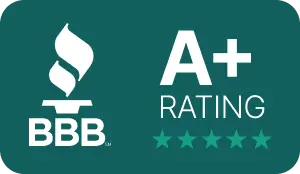When a loved one leaves behind a residence that still carries a mortgage, beneficiaries discover that bricks and mortar are only half the battle. Loan servicers expect timely payments, insurance and taxes never pause, and co-heirs may disagree about next steps. Yet with thoughtful planning—and occasionally strategic liquidity—a mortgaged inheritance can be transformed from a source of stress into a cornerstone of family wealth.
The Three Core Options: Keep, Sell, Refinance
The moment you learn you are inheriting a property encumbered by debt, evaluate the numbers through three lenses. Keeping the home preserves sentimental value and potential appreciation but demands continued mortgage payments and upkeep. Selling converts equity into cash quickly, though market timing and probate court calendars influence net proceeds. Refinancing allows an heir who wants the property to assume full legal ownership and possibly secure better loan terms. A clear understanding of each path keeps family discussions productive and focused on data rather than emotion.
Keeping the House: Managing Payments and Risk
Many heirs want to hang on to the family home—especially if a sibling plans to live there or the property serves as a future rental. The first question is whether the estate, or an individual beneficiary, can reliably cover principal, interest, taxes and insurance. Lenders typically allow successors to “step into the shoes” of the deceased borrower under federal servicing guidelines, but they still expect on-time payments. Here, the fiduciary obligations of personal representatives come into play: an executor who ignores arrears could face personal liability if the home slips toward foreclosure.
If estate liquidity is tight, short-term solutions such as a probate advance can cover monthly payments until the estate’s broader assets—life-insurance proceeds, brokerage accounts, even future sale proceeds—become accessible. Because these advances are typically non-recourse to personal assets, they protect heirs from deeper out-of-pocket exposure.
Selling Under Probate: Timing Matters
Selling a mortgaged home while probate is open demands both legal and market choreography. You cannot list real property until someone completes filing the initial probate petition and the court issues letters testamentary or letters of administration. Only then can an executor engage a real-estate agent, negotiate offers and sign closing documents.
Meanwhile, days on market translate into mortgage interest, utilities and insurance premiums that eat into net equity. Some heirs solve the cash-flow crunch by tapping an inheritance advance, trading a slice of their future distribution for dollars today to keep the property show-ready and the loan current until closing.
Refinancing Into Your Own Name
An heir who wants long-term ownership often chooses to refinance the existing debt. The bank will require clear title, so situations where the decedent failed to retitle assets into a living trust may call for correcting title issues via a Heggstad motion (in California) or a comparable petition elsewhere. Once title is clean, the heir can shop rates, possibly extending the amortization to reduce monthly payments.
Do not overlook how marital-property rules shape underwriting. In community-property jurisdictions, spouses may automatically share responsibility for the new loan even if only one heir signs. Understanding state marital property rules early prevents surprises at closing and after.
Sorting Out Heirship and Equity Splits
Determining who is entitled to what share of the equity can be trickier than forecasting housing prices. Biological children, step-children, adopted heirs and surviving spouses often stand on different legal footings that vary by state statute. Before any refinance or buyout, map each person’s claim by understanding who actually owns the equity.
If one beneficiary wants the house and others prefer cash, negotiate a fair buyout price—often the market value minus selling costs the group would have paid. A probate court will usually approve such settlements so long as they are well-documented and treat similarly situated heirs consistently.
Bridging the Cash Gap During Probate
Regardless of the path you choose, the months between a loved one’s passing and final distribution can strain liquid reserves. Mortgage servicers rarely grant long forbearance periods simply because an estate is in progress. That is why many heirs explore short-term financing tools available only during probate.
From the perspective of a funding company, the goal is to supply heirs with optionality rather than dictate outcomes. When used prudently, advances let families keep a property off the foreclosure docket, finish essential repairs that boost sale price, or lock in a rate-protected refinance before the Federal Reserve shifts course again. Because repayment comes from estate proceeds, heirs avoid the personal guarantees associated with conventional bridge loans.
Final Thoughts
Choosing whether to keep, sell or refinance a mortgaged inheritance is rarely a purely financial decision. Memories, future housing needs and sibling relationships weave through every spreadsheet. Still, the numbers matter, and so does timing. By pairing clear legal authority, accurate title work and flexible liquidity—sometimes through specialized funding—heirs can honor the past while optimizing the future value of their most tangible legacy.








